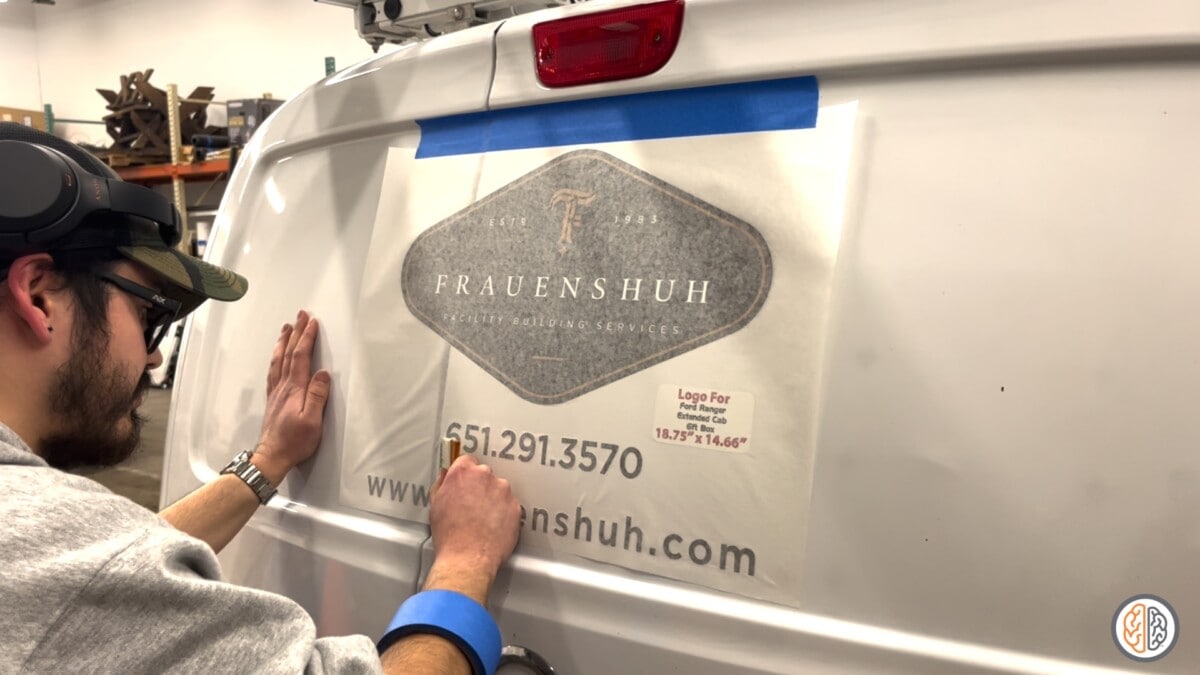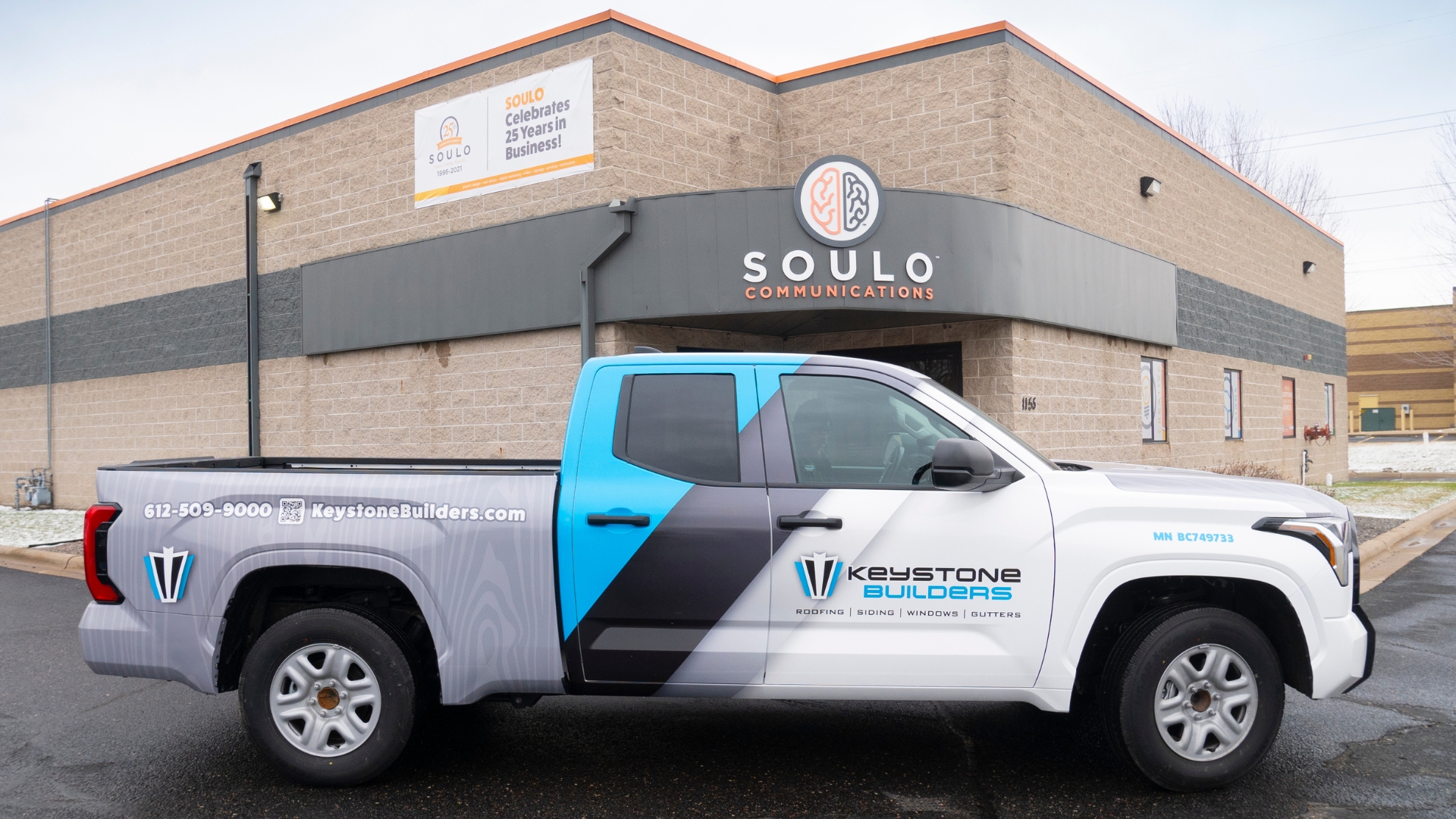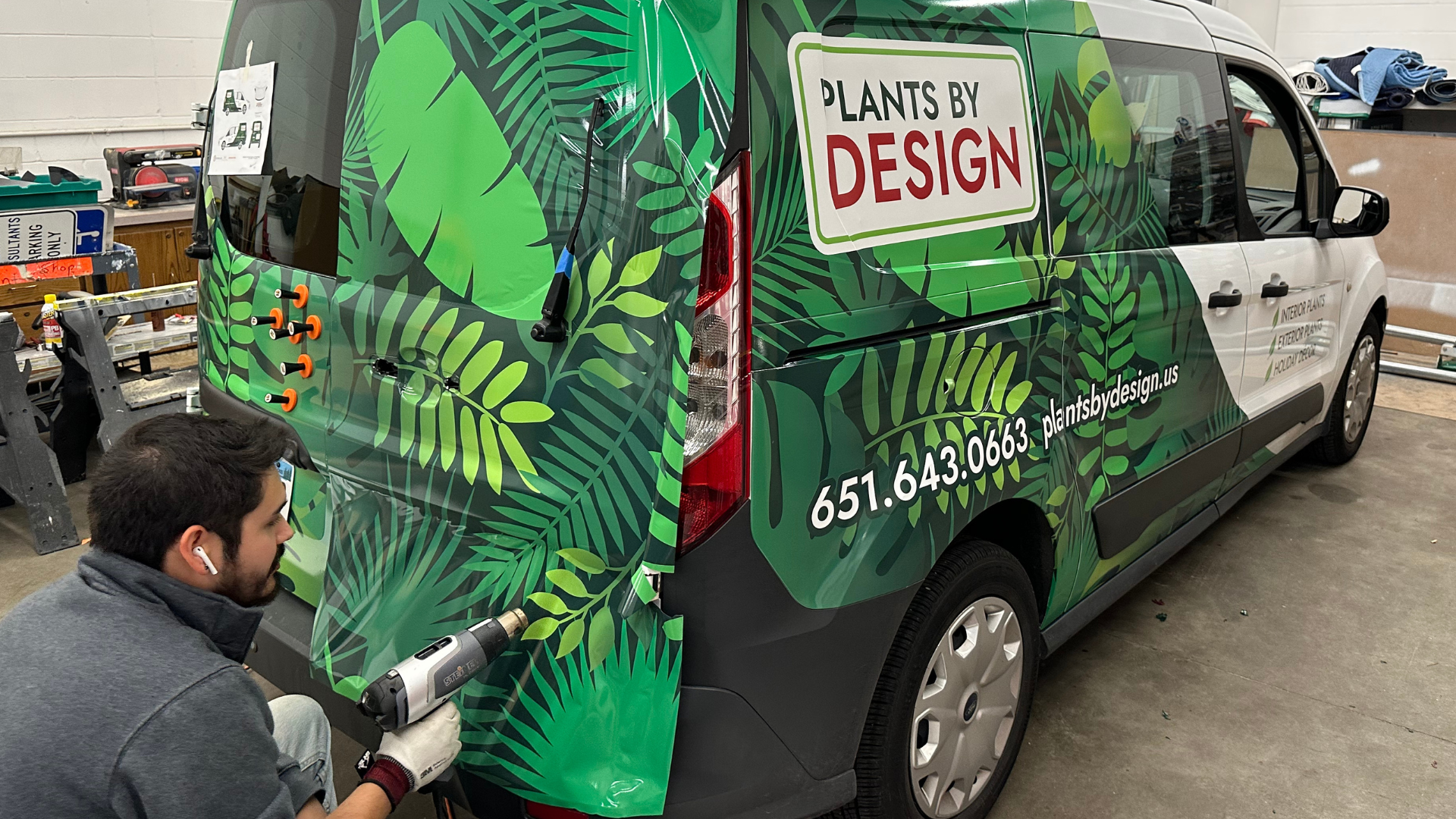Vehicle wraps are cool. Sometimes they’re for promotional purposes, like a company work truck or van. Other times they’re just for style. They can even save you money. For instance, if you bought a brand-new truck, applied a vinyl vehicle wrap, and then three years later decided to sell the truck, the pristine condition of the paint would add resale value to the vehicle—probably more than you paid to wrap it.
Most of the vehicles we wrap (and we wrap them all: cars, trucks, motorcycles, vans, tractor-trailers—even golf carts) are for promotional purposes. If you want to get a brand, company, or service out in front of people, it’s a great way to do that, especially if your business calls for a lot of driving or being parked at job sites. We’ve seen visual impression estimates of 40,000 a day in high-traffic locations.
Vehicle wraps aren’t cheap—even though as noted above, they can save money in the longer term—so it pays to make sure yours is done right, and then maintain it well.
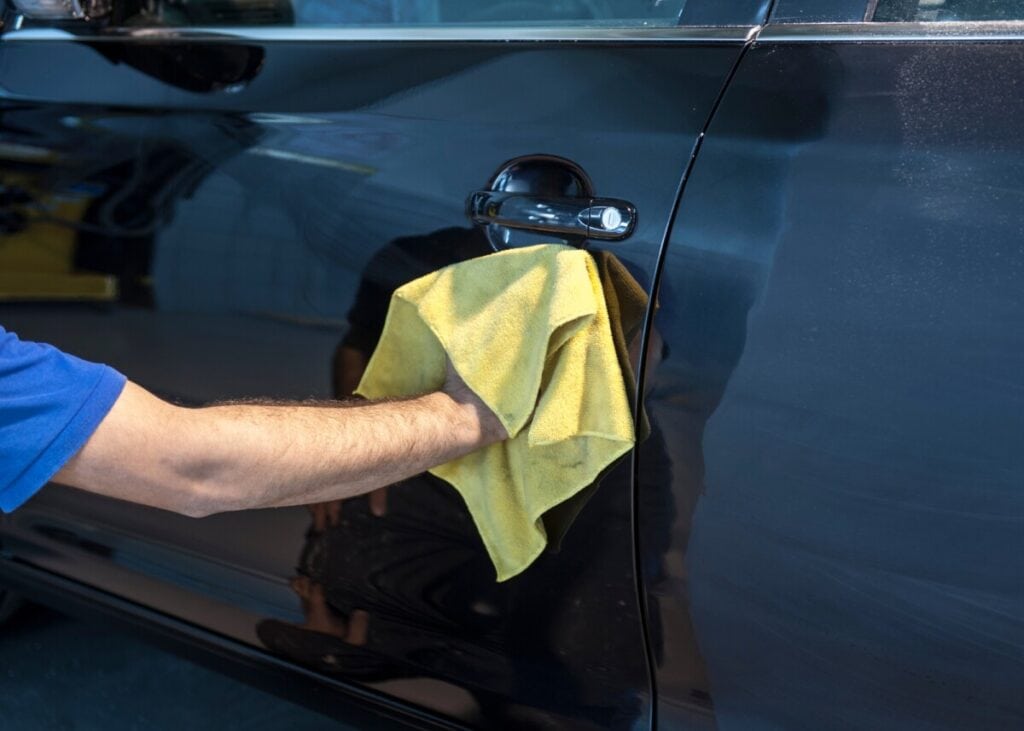
Surface Prep
A vehicle wrap is only as good as the surface it’s attached to. The best time to wrap a vehicle is straight off the sales lot, when the paint and surface finish is pristine. If it’s too late for that, then it’s best if the topcoat is in good shape. In other words, no rust or bubbled paint. Any bubbled paint will come off when the vinyl is removed.
If you’ve ever used touch-up paint on the vehicle, be aware that it will almost certainly come off when the vinyl wrap is removed. A clean surface is also a must, so wash the vehicle thoroughly before you drop it off. The vinyl installer will perform an inspection and deep clean on the entire exterior of the vehicle to make it ready for the vinyl to adhere.
If the vehicle is already wrapped, we’ll remove the existing wrap. In these cases, how long the vinyl has been on the vehicle is critical. Most vehicle wraps are thought to last five to seven years, and the best quality wraps are generally thought to age out at around the top end of that range. However, if the wrap has been on longer than that, it’s going to be very painstaking to remove. The longer the vinyl has been on the vehicle, the more likely the removal is to peel away the underlying paint.
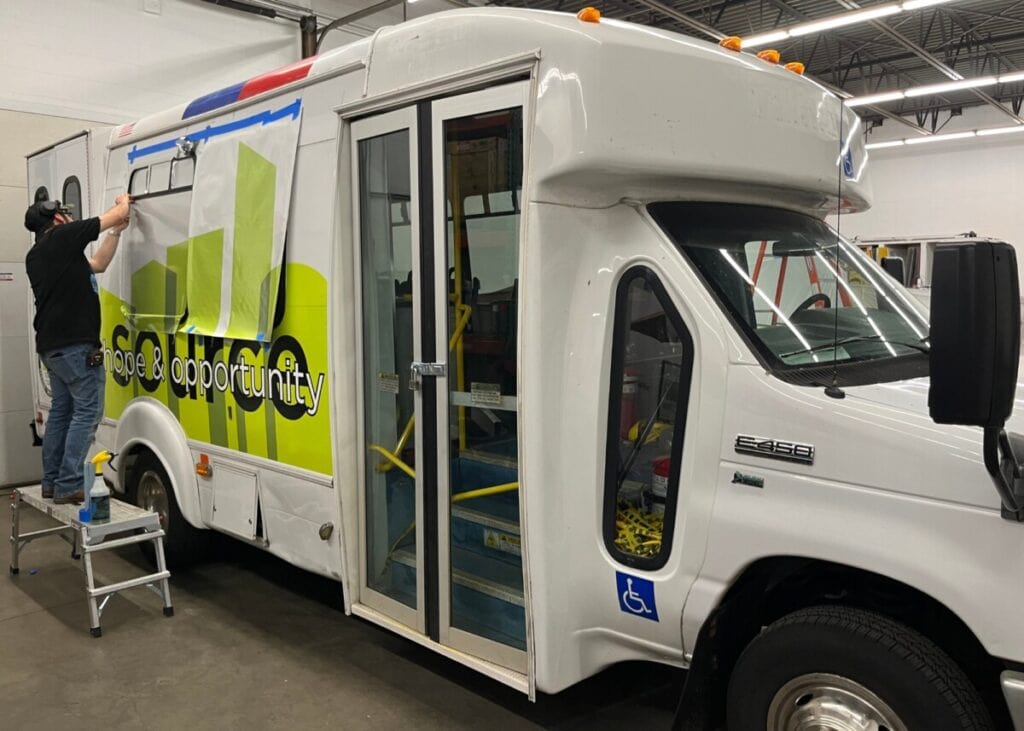
Material Selection and Installation
High-quality vinyl applies better, looks better, and lasts longer. SOULO typically uses 3M vinyl materials for vehicle wraps, and our installers are 3M certified. Low-quality vinyl is much more likely to fade, crack, and even peel. A high-quality vinyl installed properly pays off in appearance and durability.
When the SOULO team installs vinyl, we start with a vehicle template (an electronic file that graphic designers use to create the graphic art). The same rule for vinyl quality applies to the template. Some are better than others, and we only use templates from companies we have experience and trust in.
Even then, we still take hard measurements of the vehicle when it’s dropped off because even the best template is based on a vehicle in pristine condition. When you consider differences in manufacturing and changes from being out in nature, well, it’s better to measure twice, cut once. This also allows us to optimize the installation for the fewest number of seams. Seams are a natural weak point in a vinyl vehicle wrap and are typically the first place a wrap fails. The fewer seams, the better.
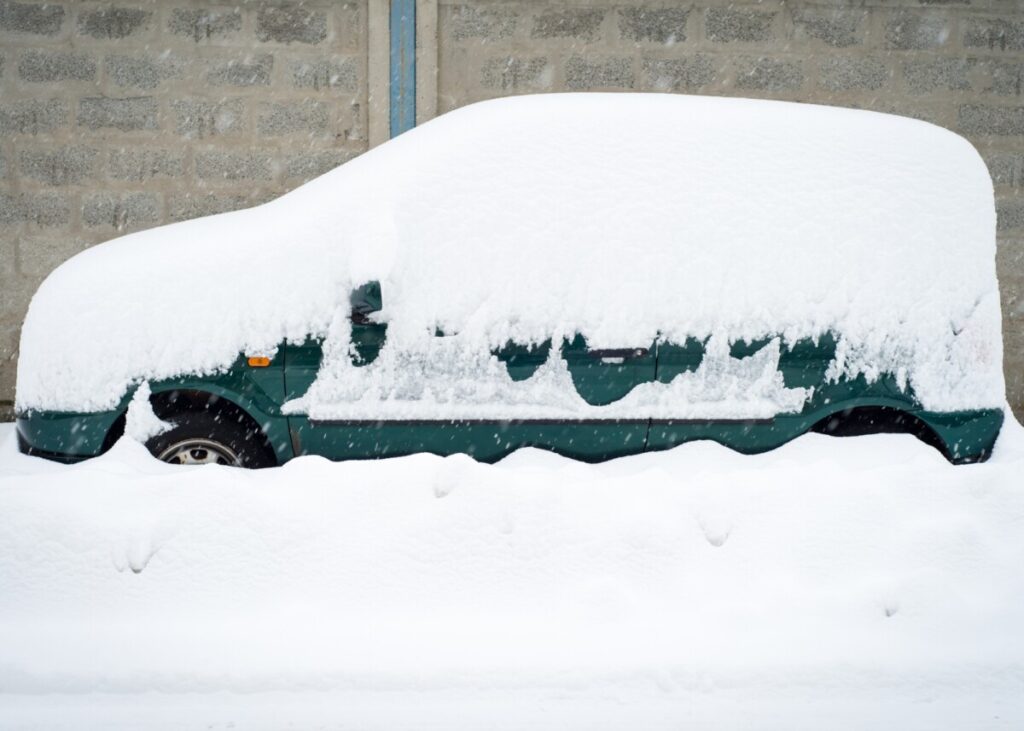
Maintenance
Ultraviolet light, temperature extremes, and dirt are all enemies of vinyl vehicle wraps. Obviously, nobody gets a vehicle wrap just to leave the car inside a garage year-round, so it’s going to get exposed to the sun. You can mitigate that by trying to park the vehicle indoors or under shade.
Temperature extremes are another thing we can’t avoid, especially in Minnesota. Here again, parking in a garage, even one that’s not temperature-controlled, will help protect the vehicle wrap. Even just being mindful of the toll natural elements can take on the wrap can help you make choices about the vehicle to preserve and prolong the wrap’s life span.
Washing the wrapped vehicle is an important part of normal maintenance, just as it would be for a vehicle with its original topcoat. It gets dirt, grime, and oil off the vinyl, and keeps it looking good. In our experience, it’s best to hand-wash a vehicle with a vinyl wrap. If you insist on using a pressure washer, be sure to keep the PSI low. We do not recommend taking a wrapped vehicle through a car wash. An old-school hand washing is the best way to keep the vinyl looking good for a longer time.
Removal
If you’re seeing significant color fade, cracks, peeling, or tears, it’s time to remove that wrap. The longer it stays on the vehicle, the harder it is to remove, and more likely the removal process will damage the paint beneath. We typically recommend that our clients replace their wraps every five years, but that’s not a hard and fast rule. Every wrap is different, and a wrap that’s been babied for five years is a lot different from one that has been exposed to harsh conditions the whole time.
If you have questions about your vehicle wrap, whether it’s already on your vehicle or you are interested in having one installed, contact us at 612.334.5679.
SOULO is a full-service marketing and communications agency that helps client partners get the most from their projects through signage, printing, and digital marketing. Ready to get started? Contact us today!
